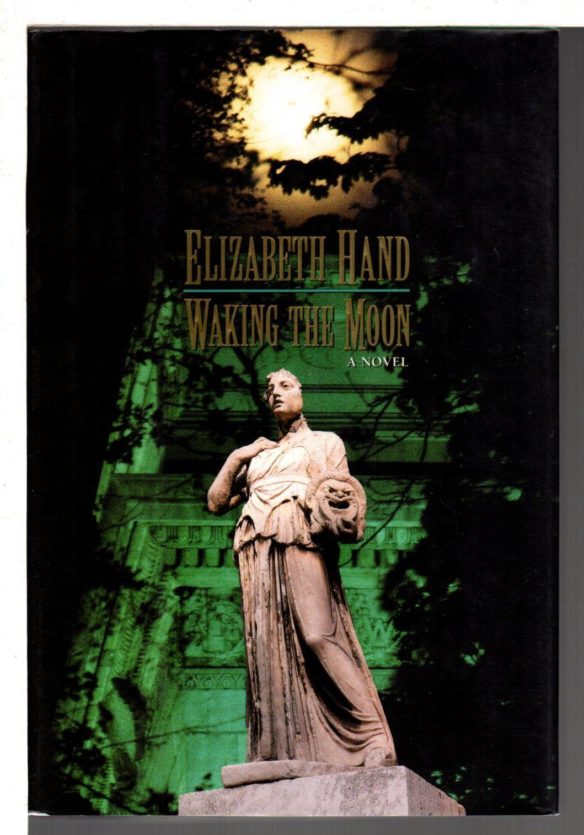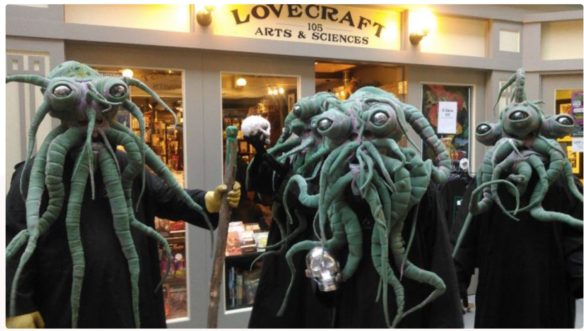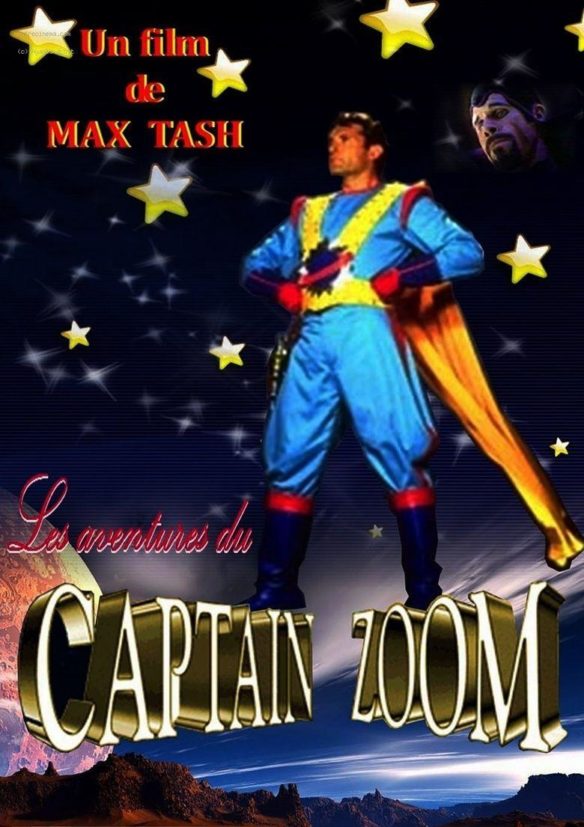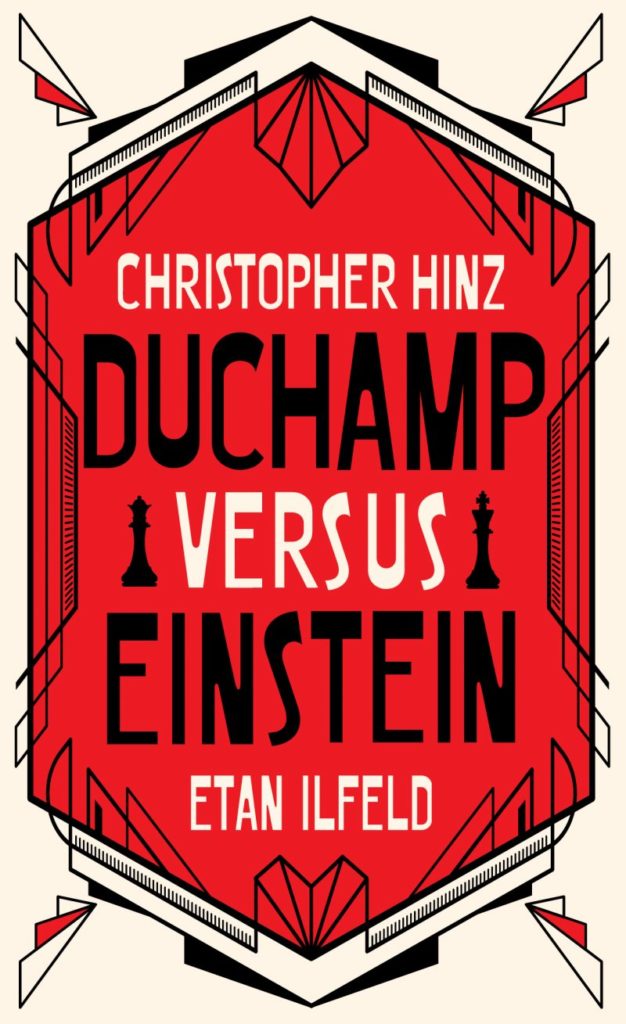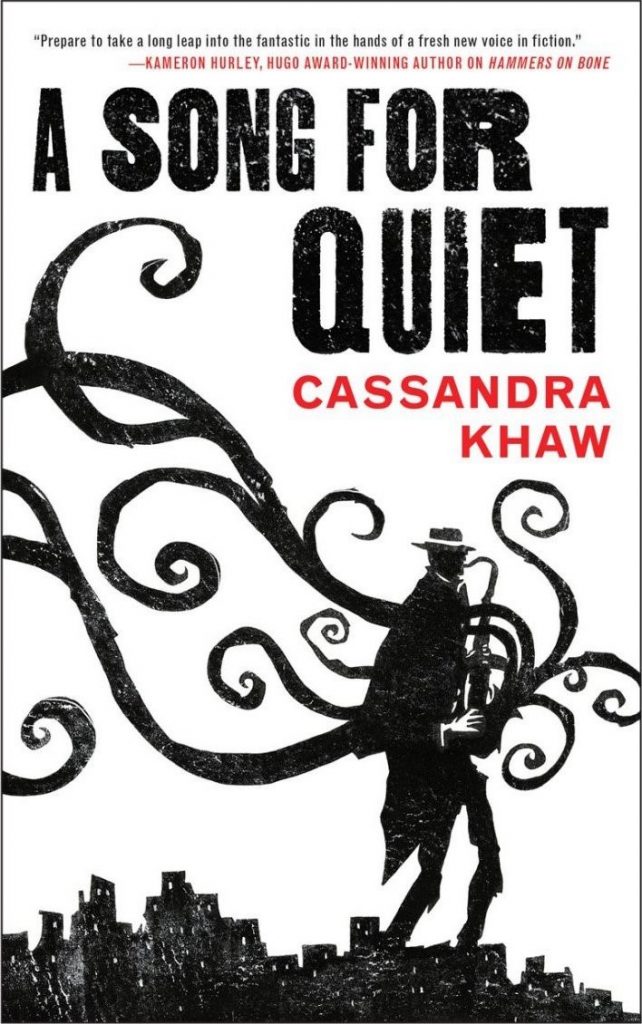(1) THE MASTER’S VOICE. “Hoard of the rings: ‘lost’ scripts for BBC Tolkien drama discovered” reports the Guardian. These artifacts of previously lost radio history include notes in Tolkien’s hand.
Decades before Peter Jackson directed his epic adaptations of The Lord of the Rings, JRR Tolkien was involved with the first ever dramatisation of his trilogy, but its significance was not realised in the 1950s and the BBC’s audio recordings are believed to have been destroyed.
Now an Oxford academic has delved into the BBC archives and discovered the original scripts for the two series of 12 radio episodes broadcast in 1955 and 1956, to the excitement of fellow scholars.
Tolkien’s fantasy masterpiece was dramatised by producer Terence Tiller, whose scribbled markings on the manuscript no doubt reflect his detailed discussions with the author in correspondence and meetings. Among the typed pages is a sheet in Tolkien’s hand, with red crossings-out, showing his own reworking of a scene….
(2) RED DOG AT MOURNING. Vanity Fair takes readers “Inside the Succession Drama at Scholastic, Where ‘Harry Potter’ and ‘Clifford’ Hang in the Balance”, where the infighting continues over control of Scholastic after the death of longtime CEO Dick Robinson, which is now led by an executive who refuses to speak to the press.
The bleak grind of the pandemic had been wearing Dick Robinson down, just like everybody else. He’d been working long days in the near-empty SoHo Headquarters of Scholastic, the $1.2 billion corporation he ran, which his father founded more than 100 years ago. He was trying to keep the business powering on as schools shut down across the country, taking with them Scholastic’s legendary in-person bookfairs. He began spending weekends and holidays on Martha’s Vineyard, where he and his ex-wife Helen Benham had bought a place in the ’90s. The house in bucolic Chilmark still served as a retreat for Benham and their adult sons, Ben and Reece. One Friday last June, the exes talked late into the night about their plans for the family’s future together as well as for the company. The next day, during a ramble on the island’s Peaked Hill trails with Helen, Reece, and the family dog, Darla, Robinson collapsed from a stroke.
His sudden death was shocking, but then came another seismic surprise: Robinson had left controlling shares of the family company to a Canadian executive named Iole Lucchese, the company’s chief strategy officer and head of Scholastic Entertainment—and now, in the wake of his death, the chair of the board. With Peter Warwick as newly minted CEO, Lucchese would oversee a children’s media empire crammed with beloved (and lucrative) franchises like Clifford the Big Red Dog, Harry Potter, Captain Underpants, Animorphs, and The Magic School Bus in an era when Hollywood eagerly devours literary properties to feed the ever-flowing streamers. A Wall Street Journal story aired plenty of dirty laundry about Scholastic’s “messy succession” and the ascendance of Lucchese, Robinson’s “former girlfriend,” who had also inherited all of Robinson’s personal possessions. Robinson’s two sons began to consider contesting the will.
While Scholastic publicly closed ranks around Lucchese, a protective corporate force field, current and veteran employees privately traded bewildered gossip. The executive suites had already been gladiatorial, people said, with shifting alliances and backstabbing betrayals more suited to Game of Thrones than a wholesome children’s media company. Now, they argued over whether Lucchese was suited to the job, whether she could keep the place from being chopped up or sold off. And they pondered the shadow Robinson’s personal life had cast over the innovative, far-reaching business he had built around his deeply felt mission to get children to read books.
“It’s worse than a normal death because of the sense of betrayal that everybody’s feeling,” says a longtime former employee. “A big mistake is what it was.”…
(3) NO SAINT. A new critical biography of Stephen Hawking is rebutted by a former student and friend, Bernard Carr, in “Underselling Hawking” at Inference.
STEPHEN HAWKING WAS an icon of twentieth-century science, renowned for both his contributions to physics and his inspiring battle against motor neuron disease. But four years after his death, Charles Seife’s Hawking Hawking paints a different picture. As indicated by its provocative title, this book is no hagiography. Seife disparages Hawking on three levels, arguing that his status as a great physicist has been exaggerated, cataloging his various personal failings, and suggesting that he was a genius at self-promotion, his iconic status being attributable to media manipulation.
As one of Hawking’s first PhD students and his friend for forty years, I do not share Seife’s views.
Although his status as a physicist was sometimes exaggerated by the media, Hawking was undoubtedly one of the brightest stars within the relativistic community. Indeed, his discovery of black-hole quantum radiation was one of the key insights of twentieth-century physics. Hawking certainly had his failings, as acknowledged by the people who loved and admired him the most, but it is misleading to elevate these above his strengths: his courage, sense of humor, and determination to live life to the full, despite the relentless progress of his illness….
(4) TWO MORE JOHN CARTER RETROSPECTIVES. “On its 10th anniversary, TheWrap goes inside the birth, death and rebirth of the sci-fi blockbuster” — “The Untold Story of Disney’s $307 Million Bomb ‘John Carter’: ‘It’s a Disaster’”.
…[Andrew] Stanton had been following the various iterations of “John Carter” for years. “That’s something I have spent my whole life wishing somebody would make, and when I was in the industry from maybe the ’90s on, if I ever heard even the slightest rumor it might get made, I would get all excited like a fanboy and go, I’ll be the first in line to go and see it,” Stanton said. “I never had the hubris to think that’s something I would want to do or could do.” But when the Favreau iteration fell apart, something stirred inside him. “It was one of those kismet moments where I’m like, It’s so crazy, it just might work, you know?”
Disney didn’t own the rights yet. But Stanton went to the top brass and made, as he says, “an impassioned plea.”
“I had nothing to lose because it wasn’t like I had to do this in the sense of I have no career or that I needed the next paycheck or something like that,” Stanton said. Instead, he told the execs, “I think these things are about to fall into public domain and I think you could reinterpret them to be something that could be digested today.” Stanton was envisioning a classic tale for modern audiences. “I remember saying, ‘Fine if I don’t make it, but you should be the ones making it,’” Stanton said. “And I meant it. I thought it had the potential to just be a big franchise.”…
“John Carter director Andrew Stanton reveals for the first time his plans for the opening scenes of the abandoned sequel, titled Gods of Mars” – “Cancelled John Carter 2 Story Revealed By Director” at Screen Rant.
…Stanton goes on to reveal that Carter arriving on Mars is actually later than the prologue would have audiences believe, and Deja has gone missing. He also compares the film’s plot to Beneath the Planet of the Apes, showing how the Therns control the whole planet. The opening description does align with the second novel in Edgar Rice Burroughs series, The Gods of Mars. Stanton has previously revealed the title of the second film would be Gods of Mars, and the third film would have been titled Warlord of Mars, yet this is the first time the writer and director has shared any major details about the sequel films….
(5) IN THEIR OWN WORDS. “An Urgent Mission for Literary Translators: Bringing Ukrainian Voices to the West” – the New York Times tells how it’s being accomplished.
As Russian forces breached the border with Ukraine late last month, Kate Tsurkan issued an urgent call for help on social media.
Tsurkan, a translator who lives in Chernivtsi, a city in western Ukraine, wanted to give international readers a glimpse of what ordinary Ukrainians are experiencing — and to counter President Vladimir V. Putin’s claim that Ukraine and Russia “are one people” by highlighting Ukraine’s distinct literary and linguistic heritage.
What she needed, she said, was to get Ukrainian writers published in English. She needed translators.
The response was swift and overwhelming: Messages poured in from translators and writers like Jennifer Croft, Uilleam Blacker and Tetyana Denford, and from editors who wanted to polish and publish their work. As the war escalated, so did their effort. Soon, they had a dedicated group of literary translators — who often spend years working on books for small academic presses — speed translating essays, poems and wartime dispatches.
“We need to elevate Ukrainian voices right now,” said Tsurkan, an associate director at the Tompkins Agency for Ukrainian Literature in Translation, or Tault.
(6) MEDIA BIRTHDAY.
1971 — [Item by Cat Eldridge] Fifty-one years ago today, The Andromeda Strain premiered. It was based off the novel by Michael Crichton. This novel had appeared in the New York Times Best Seller list, establishing Crichton as a genre writer. The screenplay was written by Nelson Gidding, whose previous genre work was his screenplay for The Haunting, based on Shirley Jackson’s The Haunting of Hill House.
Robert Wise directed, who you’ll no doubt recognize for his earlier work on West Side Story and The Sound of Music.
The primary cast was Arthur Hill as Dr. Jeremy Stone, James Olson as Dr. Mark Hall, David Wayne as Dr. Charles Dutton and Kate Reid as Dr. Ruth Leavitt.
Produced on what was considered a high budget of six point five million, with special effects designed by Douglas Trumbull, it made a profit of six million in the States.
So how did it fare among critics? Roger Ebert in his syndicated column at the time said of it that, “On the level of fiction, ‘The Andromeda Strain’ is a splendid entertainment that will get you worried about whether they’ll be able to contain that strange blob of alien green crystal.” And Kevin Maher of The Times was equally enthusiastic: “The Sound of Music director Robert Wise executed a spectacular volte-face with this sombre and painstakingly realistic scientific procedural about an alien micro-organism that threatens all life on Earth.”
Audience reviewers at Rotten Tomatoes currently give it a seventy two rating.
It was nominated for a Hugo at the first L.A. Con, the year A Clockwork Orange won.
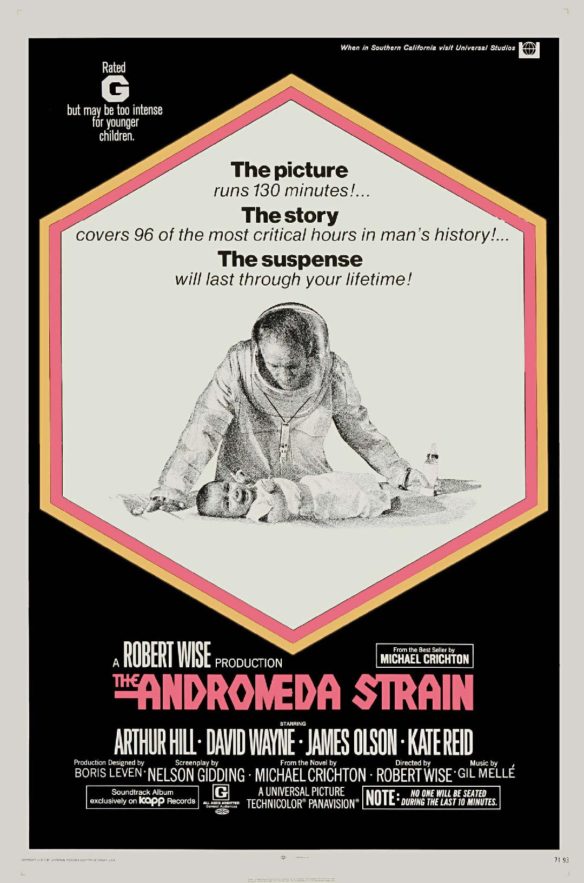
(7) TODAY’S BIRTHDAYS.
[Compiled by Cat Eldridge.]
- Born March 12, 1879 — Alfred Abel. His best-known performance was as Joh Fredersen in Fritz Lang’s Metropolis. It wasn’t his only genre as Phantom, a 1922 German film, was fantasy, and my German is just good enough forty years after I studied it to see that much of his work could be considered genre or genre adjacent. (Died 1937.)
- Born March 12, 1886 — Kay Nielsen. Though he’s best known for his work with Disney, for whom he did many story sketches and illustrations, not the least for Fantasia, and The Little Mermaid be it thirty years after his death, I’d be remiss not to note his early work illustrating such works as East of the Sun and West of the Moon, Hansel and Gretel and Andersen’s Fairy Tales. East of the Sun and West of the Moon Is my favorite work by him. (Died 1957.)
- Born March 12, 1914 — John Symonds. Critic of Alistair Crowley who published four, yes four, books on him over a fifty-year period: The Great Beast, The Magic of Aleister Crowley, The King of the Shadow Realm and The Beast 666. Needless to say the advocates of Crowley aren’t at all happy with him. Lest I leave you with the impression that is his only connection to our community, he was a writer of fantasy literature for children including the feline magical fantasy, Isle of Cats with illustrations by Gerard Hoffnung. (Died 2006.)
- Born March 12, 1925 — Harry Harrison. Best known first I’d say for his Stainless Steel Rat and Bill, the Galactic Hero series which were just plain fun, plus his novel Make Room! Make Room!, the genesis of Soylent Green (a film which won a Hugo at DisCon II). It garnered a Nebula as well. He was nominated for Hugos at Seacon for Deathworld, then at Chicon III for Sense Obligation, also known as Planet of the Damned. I just realized I’ve never read the Deathworld series. So how are these? See our anniversary post on the Alex Cox animated version of Bill, the Galactic Hero here. And he was named a SFWA Grand Master in 2009 — a outstanding honor indeed! (Died 2012.)
- Born March 12, 1933 — Myrna Fahey. Though best known for her recurring role as Maria Crespo in Walt Disney’s Zorro, which I’ll admit is at best genre adjacent, she did have some genre roles in her brief life including playing Blaze in the Batman episodes of “True or False-Face” and “Holy Rat Race”. Her other genre appearances were on The Time Tunnel and Adventures of Superman. Cancer took her at just forty years. Damn it. (Died 1973.)
- Born March 12, 1933 — Barbara Feldon, 89. Agent 99 on the Get Smart series, who reprised her character in the TV movie Get Smart Again! (1989), and in a short-lived series in 1995 later also called Get Smart. Other genre credits include The Man from U.N.C.L.E. She didn’t have that much of an acting career though she was in the pilot of Rowan & Martin’s Laugh-In. It amazing how many performers guested on that show.
- Born March 12, 1952 — Julius Carry. His one truly great genre role was as the bounty hunter Lord Bowler in The Adventures of Brisco County, Jr. oh but what a role it was! Over the course of the series, he was the perfect companion and foil to Bruce Campbell’s Brisco County, Jr. character. He did have one-offs in The Misfits of Science, Earth 2, Tales from the Crypt and voiced a character on Henson’s Dinosaurs. (Died 2008.)
- Born March 12, 1960 — Courtney B. Vance, 62. I know him best from Law & Order: Criminal Intent, in which he played A.D.A. Ron Carver, but he has some interesting genre roles including being Sanford Wedeck, the Los Angeles bureau chief of the FBI in the pilot of FlashForward, Miles Dyson: Cyberdyne Systems’ CEO who funds the Genisys project in Terminator Genisys, and The Narrator in Isle of Dogs. He had a recurring role in Lovecraft Country as George Freeman. He earned a Primetime Emmy Award for Outstanding Guest Actor in a Drama Series nomination for that role.
(8) COMICS SECTION.
- Half Full brings a prehistoric tear to the eye.
- Tom Gauld’s new Guardian cartoon is about the three literary pigs and the bibliophile wolf.
(9) RED’S MOM. [Item by Martin Morse Wooster.] In the Washington Post, Michael Cavna interviews Domee Shi, director of Turning Red, which “is not only the first Pixar film to be solo-directed by a woman. It also continues Pixar’s growth with personal stories along matrilineal lines.” “’Turning Red’ shows how Disney and Pixar movies are embracing mother-daughter relationships”.
…For “Turning Red,” Shi mined her own life for a story set in early-aughts Toronto, as 13-year-old Meilin “Mei” Lee (voiced by Rosalie Chiang) rebels against the hovering control of her mother, Ming (Sandra Oh). The supernatural secret in this Chinese-Canadian family, though, is that Mei suddenly begins turning into a giant red panda when her emotions are inflamed.
“I was her,” says Shi, who is in her early 30s. “I was Mei when I was 13 — I was this dorky, confident, obsessive girl who thought she had her life under control. I was her mom’s little perfect daughter and then one day woke up, and everything changed: my body, my emotions, my relationship with my mom — I was fighting with her every day.”…
(10) PULP WARS. Lots of inside stuff the actor’s Star Wars career in this article based on his TV interviews: “Samuel L. Jackson says he didn’t ask for a ‘Pulp Fiction’ engraving on his ‘Star Wars’ lightsaber: ‘They did that because they loved me’” at Yahoo!
…During the interview on “The Graham Norton Show,” Jackson said he asked George Lucas, the creator of “Star Wars,” for his fictional weapon to be purple so that he would be able to find himself in the battle scene in the second prequel movie, “Star Wars: Attack of the Clones.”
“I said to George, ‘You think maybe I can get a purple lightsaber?'” Jackson said. “He’s like, ‘Lightsabers are green, or lightsabers are red.’ And I’m like, ‘Yeah, but I want a purple one. I’m like the second-baddest Jedi in the universe next to Yoda.’ He’s like, ‘Let me think about it.'”
The “Shaft” actor added: “And when I came back to do reshoots, he said, ‘I’m going to show you something. It’s already caused a shitstorm online.’ And he had the purple lightsaber, and I was like, ‘Yeah!'”
(11) HE’S EVEN STRANGER. Marvel explains Baron Mordo, nemesis of Doctor Strange in the comics.
Langston Belton explains how Baron Mordo becomes a villain and primary enemy of Doctor Strange by aligning himself with monsters of the multiverse like Dormammu, Mephisto, and more!
(12) A MISS IS AS GOOD AS A MILE. [Item by Mike Kennedy.] After initial calculations that showed a newly-discovered 230-foot asteroid will hit the Earth next year, we’ve been given a reprieve. The initial data looked bad, then the asteroid disappeared from view because its line of site was close to that of the bright Moon.
After a little while on pins and needles, additional data showed that it will miss in 2023 by over 5 million miles. That’s good, since it could’ve caused an explosion the size of the atomic bomb leveled Hiroshima. “230-foot wide asteroid initially expected to hit Earth in 2023 was false alarm” at USA Today.
… Astronomers had been concerned that there wasn’t enough time to prepare a defense system against the asteroid had it been on track to strike Earth. In November, NASA launched the DART system, which will seek to determine whether crashing a spacecraft into an asteroid could change its course. The spacecraft is expected to hit the asteroid moon of Didymos in September.
(13) CATCH ‘EM ALL. If he didn’t feel sick before, he does now. “Georgia man gets 3 years in prison for spending nearly $60,000 in COVID-19 relief money on a Pokémon card” at Yahoo!
… 31-year-old Vinath Oudomsine has been sentenced to 36 months in prison after admitting he used nearly $60,000 in COVID-19 relief funds to buy a Pokémon card, according to the U.S. Attorney’s Office for the Southern District of Georgia. He pleaded guilty to one count of wire fraud.
Oudomsine applied for a COVID-19 relief loan from the Small Business Administration, supposedly for an “entertainment services” business, and he received $85,000, prosecutors said. But he allegedly lied on the application and spent $57,789 of the relief money he received to buy a Charizard card.
Oudomsine was ordered to pay restitution of $85,000, and he was fined $10,000 and given three years of supervised release after his prison sentence is completed. He also agreed to forfeit the card….
(14) A TICK AWAY. J.G. Ballard discusses his fictions set “five minutes into the future” in the 2003 BBC profile hosted by Tom Sutcliffe.
(15) VIDEO OF THE DAY. [Item by Martin Morse Wooster.] In “The Batman Pitch Meeting,” Ryan George, in a spoiler-filled episode, says that The Batman is dark–so dark “They have one lightbulb per household” in Gotham City. The next Batman movie, says the writer, will be so dark “we can show a completely black screen” and have the characters read a Batman audiobook to save money. Also, in The Batman, while Batman is “dark and brooding” Bruce Wayne is “brooding and dark.”
[Thanks to Mike Kennedy, Martin Morse Wooster, John King Tarpinian, Chris Barkley, Rob Thornton, Jeffrey Smith, Alan Baumler, Steven French, Andrew Porter, Michael Toman, and Cat Eldridge for some of these stories. Title credit belongs to File 770 contributing editor of the day Peer, in creative conversation with Soon Lee.]


